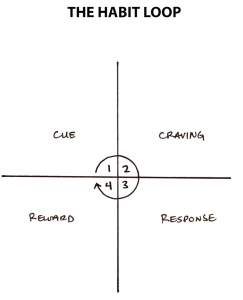In my last blog, I talked about how one can change their habits through cues and rewards. In this blog though, I’ll be talking about how one can begin to shift their lifestyle through small choices over time. The lifestyle that this blog will be talking about though, will be, how to make clothes last longer when properly cared for. Why should you take care of your clothes correctly? You should take care of your clothes properly so they may last longer and you will not need to get new clothes as often. As a bonus, as we all know, the fashion industry is a hot mess when it comes to sustainability, but by learning to care for your clothes correctly, you can become sustainable by protesting against the fast fashion industry in a very peaceful way by not buying new clothes as often.
There are many different methods of taking care of your clothes. But before I begin, let me define what ‘proper’ means. Proper means, using the right amount of detergent, using the washing machine correctly, knowing how to read clothes labels, and knowing how to wash your clothes without damaging them.
Let us begin this journey of change as a college student. Most college students either learn how to wash their clothes when first going to college, or learn how to before college even begins. But did you know you could be damaging your clothes by not washing them properly? The most common mistakes college students, and others, make when washing their clothes are too much detergent, overloading the washer, not sorting clothes, and not checking the garment labels (Festiva Laundry). Each of these mistakes can take some life off of the garment, leading them to not last long.
Using too much detergent can cause extra soap suds that do not completely rinse out of clothes, leaving behind a sticky residue (Bennett, 2022). But by measuring out the right amount, using only about 1 tablespoon per average weight load (Sanci, 2023), preventing detergent buildup is simple. To make this process more sustainable, try switching to a ‘cleaner’ detergent brand or make your own detergent.
The next common mistake that people tend to make is overloading the washing machine. Overloading a washing machine can cause performance issues mechanically, not clean your clothes, and tear clothes up (Buiano, 2023). The simple way to prevent your clothes and machine from being torn and overloaded is by decreasing the amount put in so that about the machine is only ⅔ full. You can also prevent your clothes from showing tears by using a delicate’s bag. A delicates bag is a bag where items that are more fragile, like silk, bras, or knitwear, can be put into to prevent tears from happening on the garment. Delicates bags have been shown to lessen the damage some garments might face. I can say this for certain through personal experience.
Next, not reading the garment label of your clothes before washing them can lead to disastrous consequences. Some of those consequences could be your clothes shrinking, getting holes, etc. But to properly take care of your clothes, reading the garment tags can instruct you how to wash your clothes properly. Checking the tag before washing your clothes can help preserve the longevity of your clothes (Buiano, 2023). Below is a stand guide of images that tell you how to wash your clothes. These images range from what temp and how to wash, bleach or no bleach, dryer or no dryer, etc.

Finally, the last mistake people tend to make is not sorting their clothes. Sorting clothes is important because it helps preserve the color of the garment. Think about it, you have a load of whites but you accidentally put one red sock in the load of whites. Now all of those whites are a pink color! Trying to revert the pink back to white would take a miracle. This is why sorting clothes by color is important. When sorting clothes, you’ll also want to think about the material of the garment. Is it delicate, is it linen, is it a sturdy material, etc. Separating by color and type of material is helpful because it can preserve the cloth. For instance, if I want to wash my linens, I would want to use hotter water because it can sanitize the linens better. But if I use hotter water when I wash my clothes, they tend to shrink. This is why separating is important because you can then give each category of garment or cloth the attention it needs.
In the end, learning how to properly wash and take care of your clothes can make them last longer and prevent you from having to buy new garments so often.
References
Bennett, J. (2022, July 10). 7 Common Laundry Mistakes That Can Damage Clothes. Better Homes and Gardens. https://www.bhg.com/homekeeping/laundry-linens/tips-checklists/laundry-mistakes/
Buiano, M. (2023, August 30). 10 Common Laundry Mistakes That May Prevent Your Clothes From Getting Clean. Martha Stewart. https://www.marthastewart.com/common-laundry-mistakes-7853523
Festiva Laundry. (n.d.). 6 Common Laundry Mistakes College Students Make at the Laudrymat. https://festivalaundry.com/resources/6-common-laundry-mistakes-college-students-make-laundromat/
Sanci, E. (2023, September 19). Stop Using So Much Laundry Detergent. Wirecutter. https://www.nytimes.com/wirecutter/blog/stop-using-so-much-laundry-detergent/
